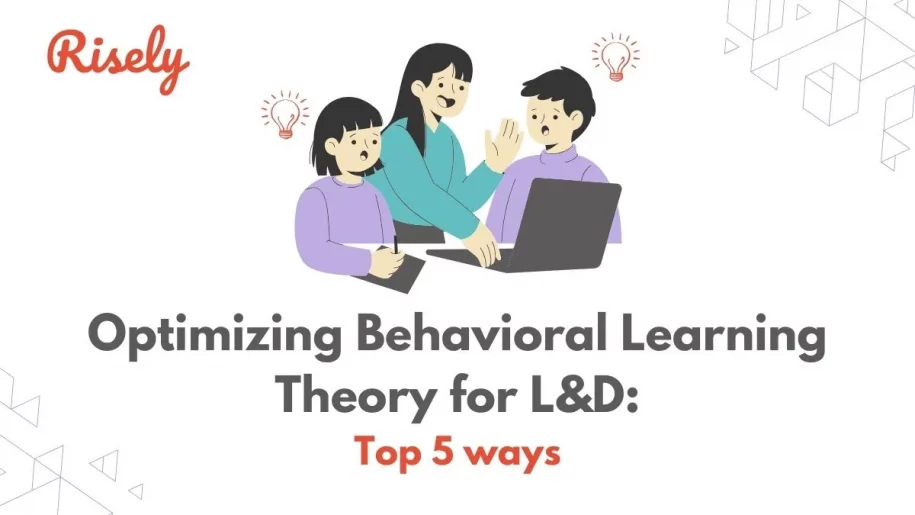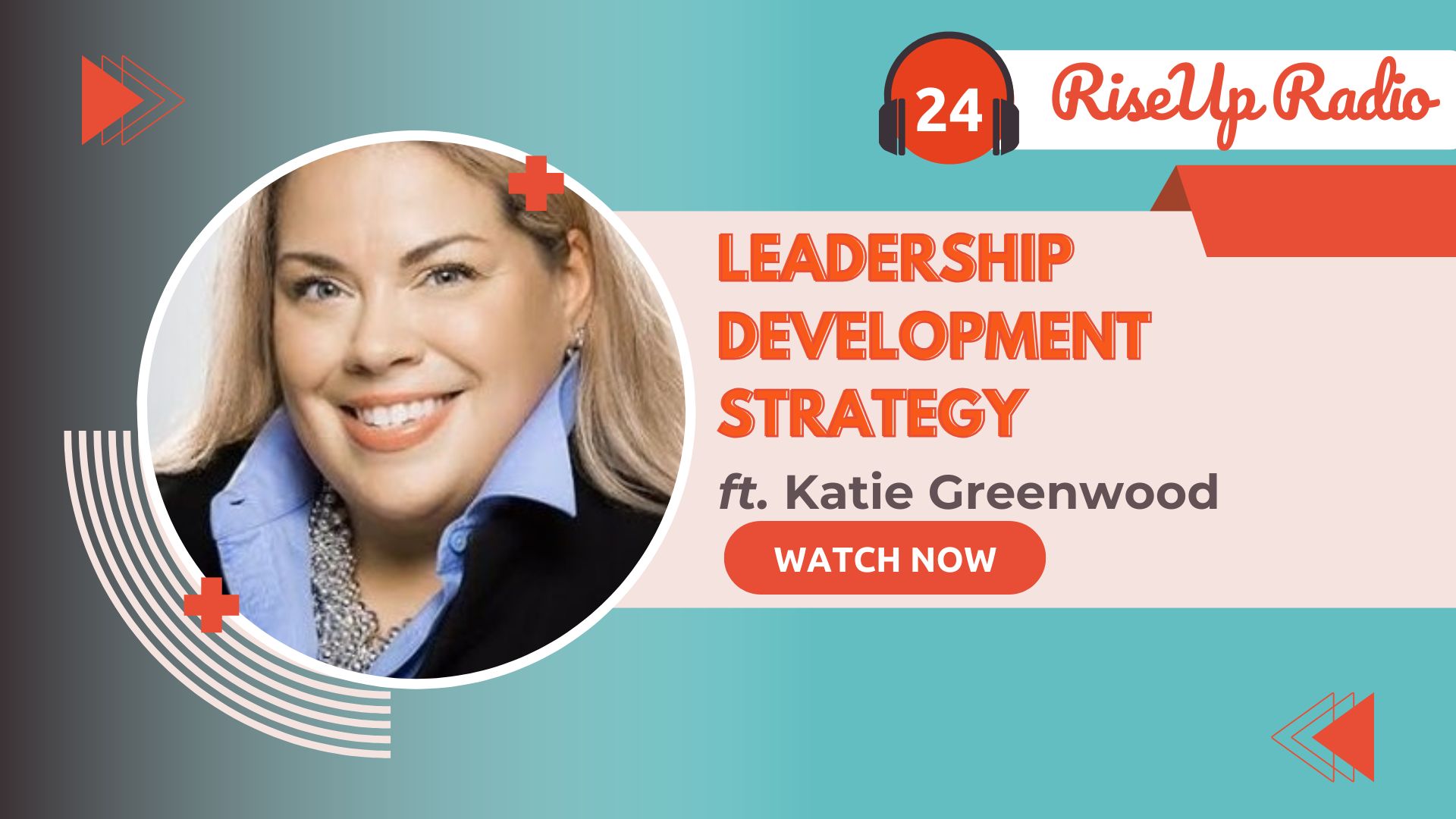Optimizing Behavioral Learning Theory for L&D: Top 5 ways
Learning and development are a quite integral part of our lives, especially for our professional lives. Lifelong learning and continuous learning are the new trends and gone are the days where just learning a skill once in your life would be sufficient to suffice your whole life. Even the professionals in learning and development need to keep learning and evolving with the times. however, along with learning something new, we must not forget the foundational building blocks that have led us here. Today, we’ll take you to the basics of behaviour learning by diving into the fascinating world of behavioral learning theory and its practical applications for those in Learning and Development (L&D) roles. Understanding the principles of behavioral learning theory can be your secret weapon in achieving the goals of fostering growth and positive organizational change. In this blog, we’ll explore behavioral learning theory and how it can be harnessed to shape behavior, enhance performance, and cultivate a thriving workplace culture. So, grab your coffee, get comfy, and let’s get going.What is behavioral learning theory?
Behavioral learning theory is a psychological framework that focuses on how behavior is learned and shaped through interactions with the environment. This theory emphasizes observable behaviors and the processes by which they are acquired, modified, and maintained. There are several key concepts within behavioral learning theory:Classical Conditioning
This theory, pioneered by Ivan Pavlov, tells you that behaviors can be learned through associations between stimuli. For example, Pavlov famously conditioned dogs to salivate at the sound of a bell by pairing the bell with the presentation of food. This could be like when a manager always brings donuts on Fridays. Eventually, employees started associating Fridays with donuts. So, they might feel happier and more motivated on Fridays because they know they’ll get a treat. It’s about creating positive associations between certain things and behaviors.Operant Conditioning
Developed by B.F. Skinner’s operant conditioning focuses on how behaviors are influenced by their consequences. According to this theory, reinforced (rewarded) behaviors are more likely to be repeated, while punished behaviors are less likely to occur in the future. Imagine if an employee gets praised every time they finish a project on time. They’ll likely keep trying to complete projects on time because they like getting praised. On the flip side, if someone always gets in trouble for being late to meetings, they’ll probably start showing up on time to avoid the trouble.Social Learning Theory
Proposed by Albert Bandura, social learning theory emphasizes the role of observation and imitation in learning. It suggests that individuals learn by observing others and modeling their behavior. This theory also incorporates concepts such as reinforcement and punishment in shaping behavior. This is when employees learn from each other. For example, if someone sees a coworker getting promoted because they always volunteer for extra tasks, they might start doing the same to increase their chances of moving up in the company. People often observe successful behaviors in others and mimic them.Behavior Modification
This approach involves systematically applying principles of behavioral learning theory to modify and change behavior. It often involves techniques such as positive reinforcement, negative reinforcement, punishment, and extinction to promote desired behaviors or reduce unwanted ones. Here, it’s about intentionally shaping behaviors to improve performance. Let’s say a company wants to reduce the number of errors in reports. They might start giving bonuses to employees who submit error-free reports (positive reinforcement). Or, they might implement a system where employees who make mistakes must redo their work (punishment). Over time, these strategies can help improve overall performance and efficiency in the workplace.Other Interesting Reads
Applications of Behavioral Learning Theory
Behavioral learning theory has several applications for Learning and Development (L&D) professionals:- Designing Training Programs: L&D professionals can use principles of behavioral learning theory to design effective training programs. They can incorporate strategies such as reinforcement, feedback, and practice to promote acquiring and retaining new skills and knowledge among learners.
- Setting Learning Objectives: By understanding the principles of operant conditioning, L&D professionals can set clear and specific learning objectives that outline the desired behaviors or outcomes they want learners to achieve. This helps focus training efforts and provides a measurable way to assess learning outcomes.
- Providing Feedback: Feedback is a critical component of learning. L&D professionals can use principles of behavioral learning theory to provide timely and specific feedback to learners, reinforcing desired behaviors and guiding them toward improvement.
- Using Reinforcement: L&D professionals can apply the principles of reinforcement to motivate learners and encourage desired behaviors. This may involve providing rewards or positive reinforcement for demonstrating desired skills or behaviors, which can increase the likelihood of those behaviors being repeated.
- Modeling Behavior: Social learning theory suggests that individuals learn by observing others. L&D professionals can use this principle to incorporate modeling into training programs, providing learners with examples of desired behaviors and allowing them to observe and emulate them.
- Creating a Positive Learning Environment: L&D professionals can create a supportive and engaging learning environment that encourages active participation and minimizes distractions. By applying principles of behavioral learning theory, they can design learning experiences that maximize opportunities for learning and skill development.
- Addressing Behavior Change: In situations where learners need to change existing behaviors or habits, L&D professionals can use behavior modification techniques based on principles of behavioral learning theory. This may involve strategies such as shaping, reinforcement schedules, or systematic desensitization to help learners overcome barriers to behavior change.
Optimizing Behavioral Learning Theory
Designing Targeted Training Programs
You can utilize principles of behavioral learning theory, such as operant conditioning, to design training programs that focus on specific behaviors desired in the workplace. Focus on clearly defining learning objectives tied to observable behaviors and incorporate reinforcement strategies to encourage the adoption of these behaviors. Suppose an organization wants to improve customer service skills among its employees. You, as an L&D professional can design a training program focused on active listening, empathy, and problem-solving behaviors. Training modules can include interactive simulations, case studies, and role-playing exercises to reinforce desired behaviors in various customer interactions.Providing Immediate and Specific Feedback
Implement a feedback system that delivers immediate and specific feedback on employee performance. Use principles of reinforcement to reinforce desired behaviors by providing positive feedback or rewards when employees demonstrate those behaviors. Similarly, use corrective feedback or consequences to discourage undesirable behaviors. Implement a performance feedback system where managers regularly provide constructive feedback to employees based on observable behaviors. For instance, after a sales presentation, a manager could praise the salesperson for effectively addressing customer concerns or guide areas for improvement, such as refining product knowledge or communication techniques.Modeling Desired Behaviors
Incorporate modeling into training sessions by showcasing examples of desired behaviors in action. Use real-life scenarios, case studies, or video demonstrations to illustrate how employees can apply new skills or behaviors. Encourage peer-to-peer learning and mentorship to facilitate observation and emulation of positive behaviors. During training sessions on effective communication skills, incorporate role-playing activities where employees can observe and emulate positive communication behaviors. Have experienced team members demonstrate active listening, constructive feedback, and empathy in simulated workplace scenarios, providing tangible examples for others to follow. Encourage participants to practice these skills safely and provide feedback to reinforce desired behaviors.Implementing Performance Incentives
Design incentive programs that align with principles of reinforcement to motivate employees to exhibit desired behaviors. Offer rewards, recognition, or incentives for achieving specific performance goals or milestones related to the targeted behaviors. Ensure that incentives are meaningful and tailored to individual preferences to maximize their effectiveness. Launch a recognition program to reward employees who consistently demonstrate desired behaviors aligned with organizational goals. For example, employees who receive positive customer feedback for their problem-solving skills could be publicly acknowledged during team meetings or receive performance-based bonuses. This incentivizes employees to continue exhibiting the targeted behaviors and contributes to a positive work culture which helps you face uncertainties head on.Creating a Supportive Learning Environment
Foster a positive and supportive learning environment that encourages experimentation, risk-taking, and continuous improvement. Provide resources, tools, and practice and skill development opportunities to help employees acquire and reinforce desired behaviors. Offer coaching, mentoring, or peer support networks for ongoing guidance and reinforcement. Implement a peer-to-peer coaching program where employees can pair up to provide support and feedback on skill development. Encourage pairs to set specific learning goals for targeted behaviors, such as time management or problem-solving. Provide resources and guidelines for effective coaching conversations and schedule regular check-ins to monitor progress and offer reinforcement. This fosters a supportive culture of continuous learning and behavior improvement within the workplace.To Wrap Up!
We’ve explored behavioral learning theory and its invaluable applications for L&D professionals. The possibilities are endless, from designing targeted training programs to providing timely feedback and implementing performance incentives. As pioneers in the field L&D, your mission is to inspire growth, foster learning, and drive positive change within our organizations. By leveraging the principles of behavioral learning theory, you can empower employees, shape behaviors, and cultivate a workplace culture where continuous learning and improvement thrive. So, let’s roll up our sleeves, get creative, and make magic happen! we can unlock the full potential of our teams and lead them to success. Here’s to embracing learning and development with enthusiasm, passion, and a hint of behavioral learning theory!Ace performance reviews with strong feedback skills.
Master the art of constructive feedback by reviewing your skills with a free assessment now.
Other Related Blogs
Building an Ultimate Leadership Development Action Plan
How to Build a Leadership Development Action Plan? Having a strong Leadership Development Action Plan is more critical than ever in today’s evolving business world. Whether you’re looking to drive…
Leadership Journey Examples on the RiseUp Radio Podcast
Leadership Journey Examples on the RiseUp Radio Podcast Leadership isn’t a destination – it’s a journey filled with twists, turns, and transformative moments that shape not just careers, but entire…
What is Immersive Learning? A New Era in Education
In this blog, you’ll learn what is immersive learning and how it is changing training, increasing engagement, and influencing the future of workforce development. … Read More
What are Learning Designs? All You Need To Know
This blog explains what learning designs are in depth while also covering it’s key components. It tells you about the process involved in creating a good learning design along with…


